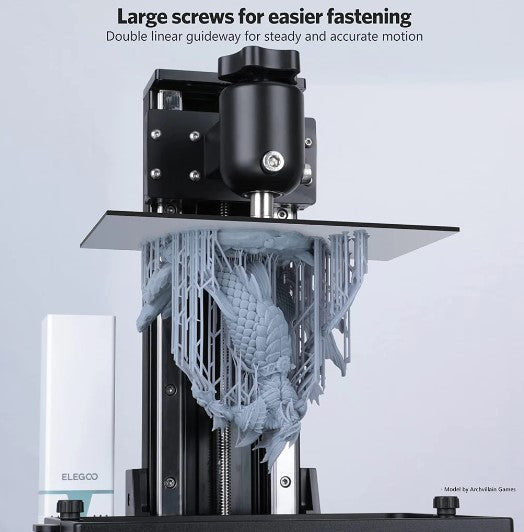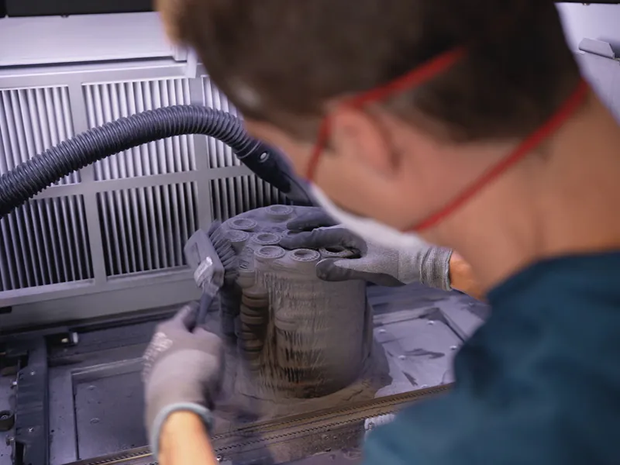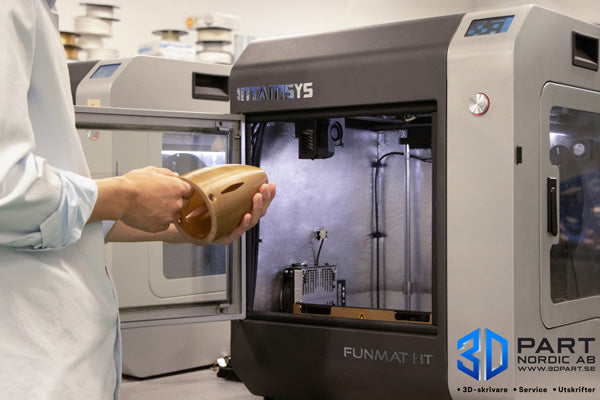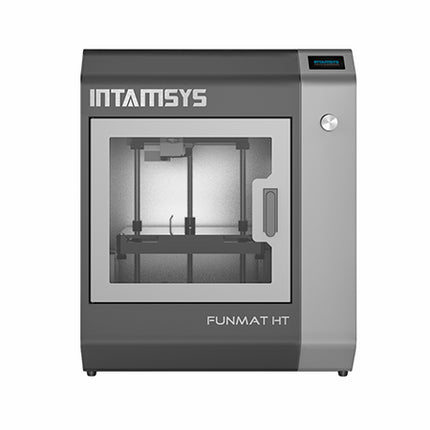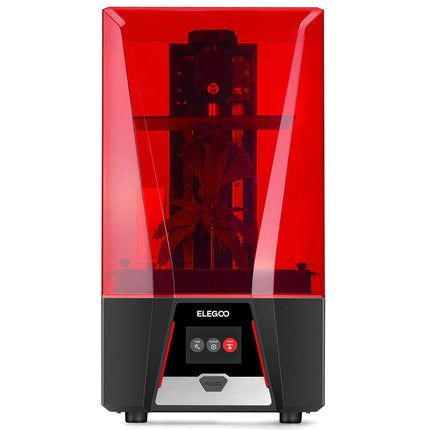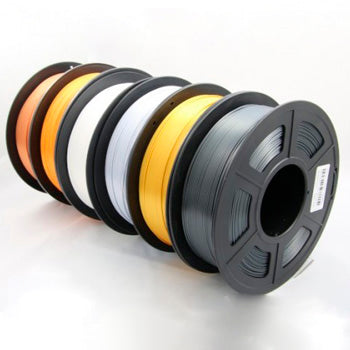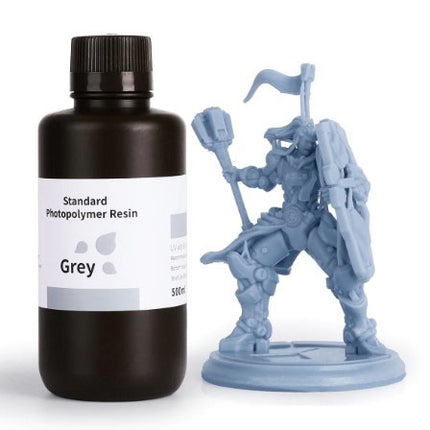PLA 3D Filament Guide for 3D Printers
PLA 3D Filament is one of the most common 3D filaments on the market and we recommend everyone who wants to make simpler prototypes and design objects to start printing in PLA plastic on your 3D Printer.
There are two standards on the market, filament PLA 1.75 mm and 2.75 mm, of which 1.75 mm is the most common.
What is PLA filament made of?
- PLA, Polylactic acid is an environmentally friendly plastic made from corn and other natural raw materials. This makes PLA one of the most environmentally friendly filaments we can use.
What material properties does PLA have?
- PLA is an affordable 3D filament that costs from about SEK 199 including VAT.
- PLA filament can withstand temperatures of up to approx. 60C.
This unfortunately limits the area of use for PLA, for example if you make a 3D print that you then forget in the car on a hot summer day, there is a great risk that your 3D model will crack or be deformed by the heat. - Degraded by UV light, the material is not suitable for use outdoors.
- Models 3D printed in PLA plastic can break down in nature, it takes about 10 years
- PLA plastic properties - It is a stiff, but brittle material. It is well suited for the use of, for example, consoles, design objects, prototypes, etc
How do I make 3D prints in PLA 3D filament? - Checklist
| 1/ Clean build platform | |
| 2/ If necessary, apply a fixing agent |  |
| 3/ Be careful that your construction platform is calibrated to the correct level |  |
| 4/ Heat the nozzle of the 3D printer between 190-220 degrees. For Azurefilm PLA we recommend approx. 205C at 0.2mm layer and a speed of 60mm/s |  |
| 5/ Heat your building platform to L - First layer about 60C - For other layers, approx. 50C is usually enough |
 |
| 6/ Part Cooling fan - Always on with PLA filament! If you have an enclosed build chamber, make sure to open a door, PLA prints best at room temperature and is sensitive to heat |  |
| 7/ For finishing, you can use wet sandpaper, spray fillers or various knives/files to remove any defects. |  |
What different types of PLA filament are there?
- SILK PLA filament , gives a glossy, colorful and aesthetically pleasing surface! See our awesome SILK Filaments here
- Matte PLA filament , Provides an aesthetic matte surface that hides layer liner, examples of these are Azurefilm pastel PLA, Fiberlogy Pastel PLA or Fiberlogy R-PLA
- Wood PLA filament , We have nice wood filaments that imitate different types of wood such as fir, pine, cork, etc. The filament contains wood chips and also smells like wood when you print with it. NOTE: Use a stainless nozzle or hardened nozzle. The wood chips wear out ordinary brass nozzles.
- HT-PLA filament , A modified "High Temperature" and extra strong PLA 3D printer filament that is usually 3D printed at higher temperatures than the standard material. It is as easy to print with as regular PLA but withstands higher temperatures and is stronger. We stock Azurefilm PLA Strongman
- PLA Carbon fiber filament – Carbon fiber makes your model stiffer, lighter and slightly more heat resistant. Carbon fiber also gives a matte finish and hides the stock lines!
How do I store PLA filament in the best way?
- PLA plastic is not hygroscopic (absorbs moisture from the environment)
- It is fine to store PLA at normal room temperature for a long time without the filament deteriorating. We have been storing open filament rolls of PLA for over 5 years. What can be noticed on older filaments is that the filament's 1.75mm wire becomes brittle and breaks off more easily. If the filament thread comes off, it can be difficult to remove filament residue from the 3D Printer's extruder and hotend.
- The best way to store all different types of 3D filament is dust-free and preferably wrapped in a bag with a moisture absorber. When a filament absorbs moisture and dust, there is a risk that your extruder and hotend will be blocked by dirt, also known as "clogging".
- We have ESUN evaccum bags that are perfect for storing most filaments


Beställ 3d modell tillverkad i plast
Vi gör legotillverkning i plast med brett utbud av material, kan även kombineras med metaller, skivmaterial etc.
Vi har flertalet 3D tekniker
- Tillverkning med Selective lasering sintering
- Tillverkning med Fused deposit molding
- Tillverkning med Stereolitografi

